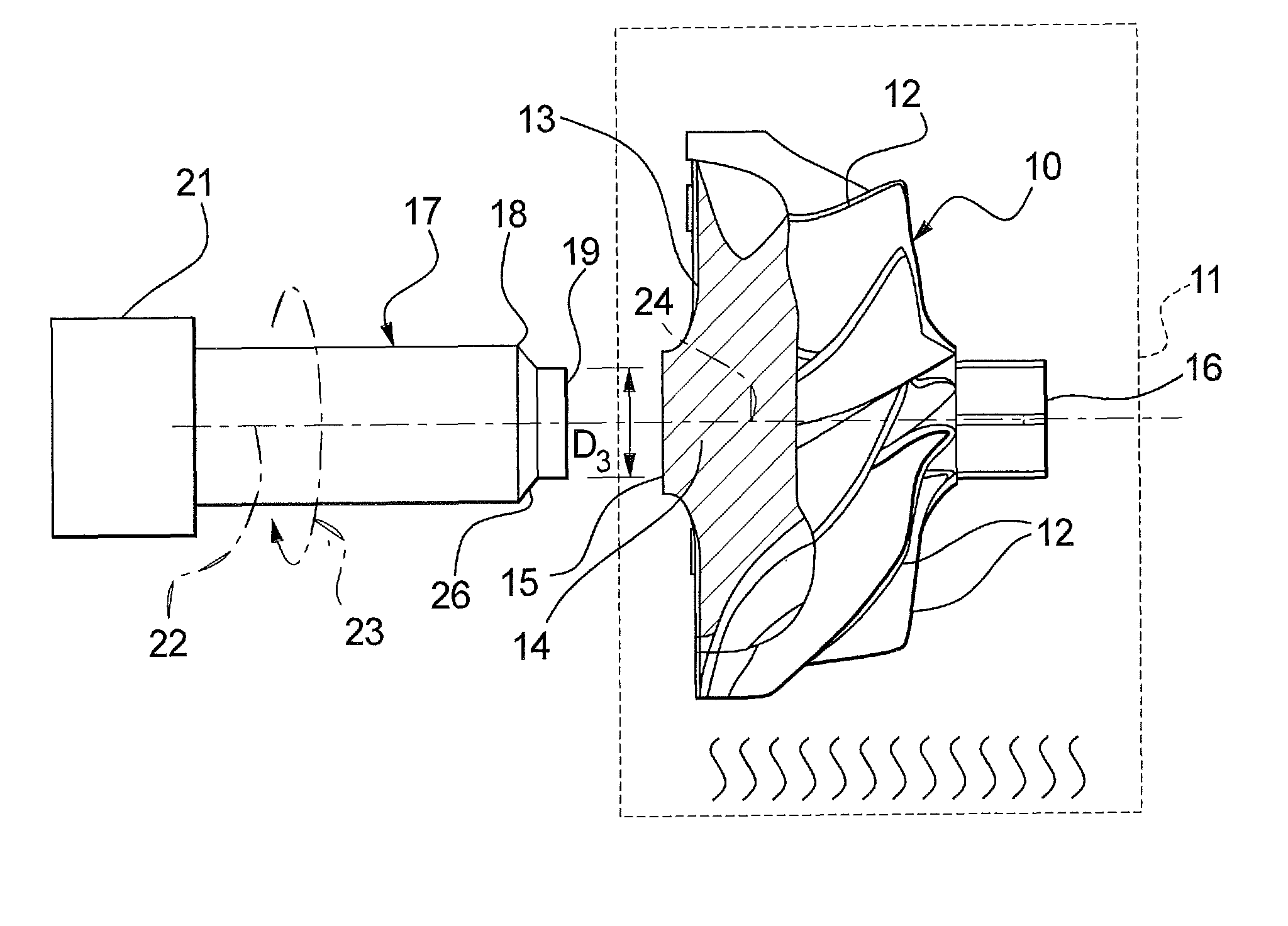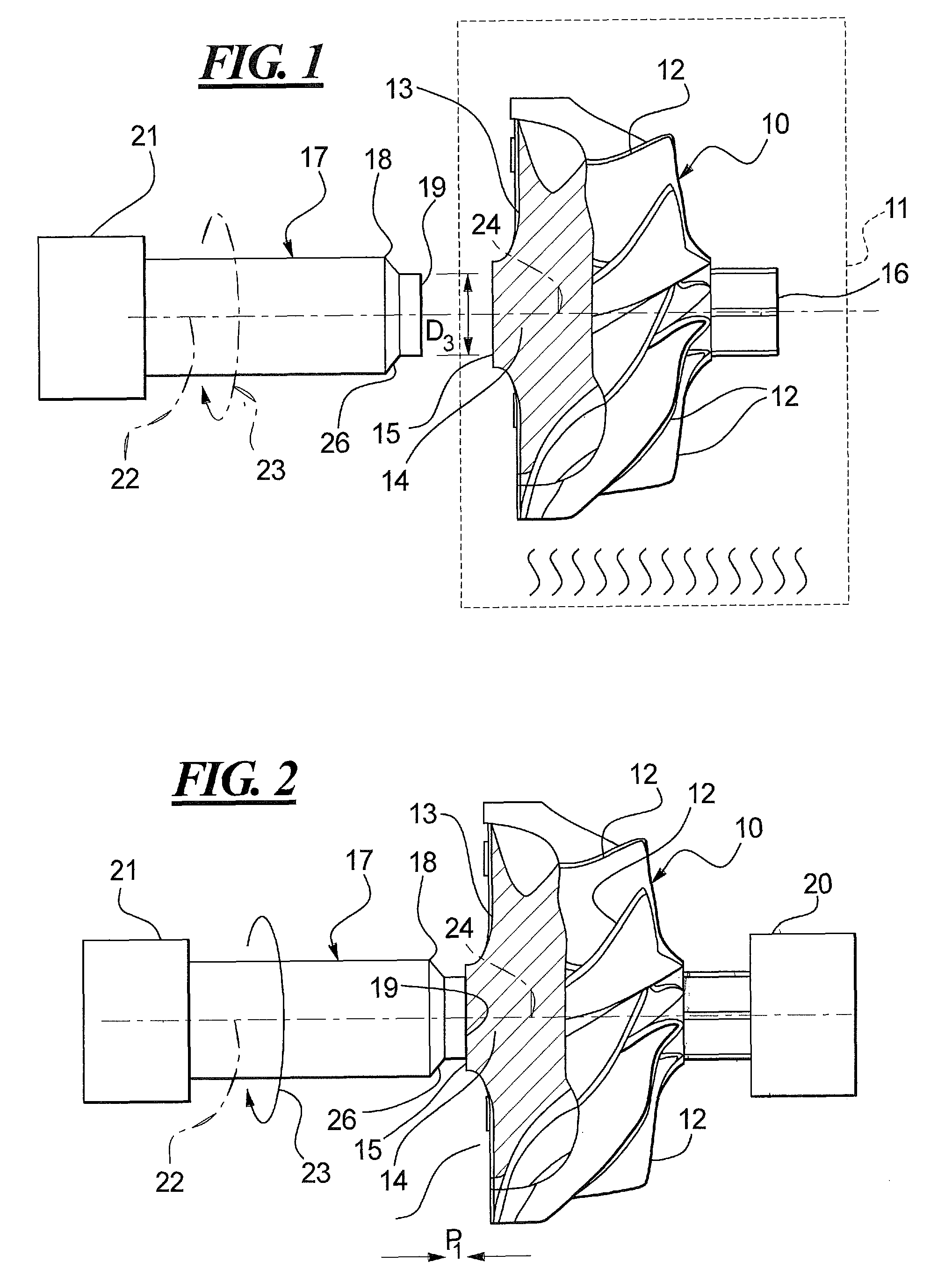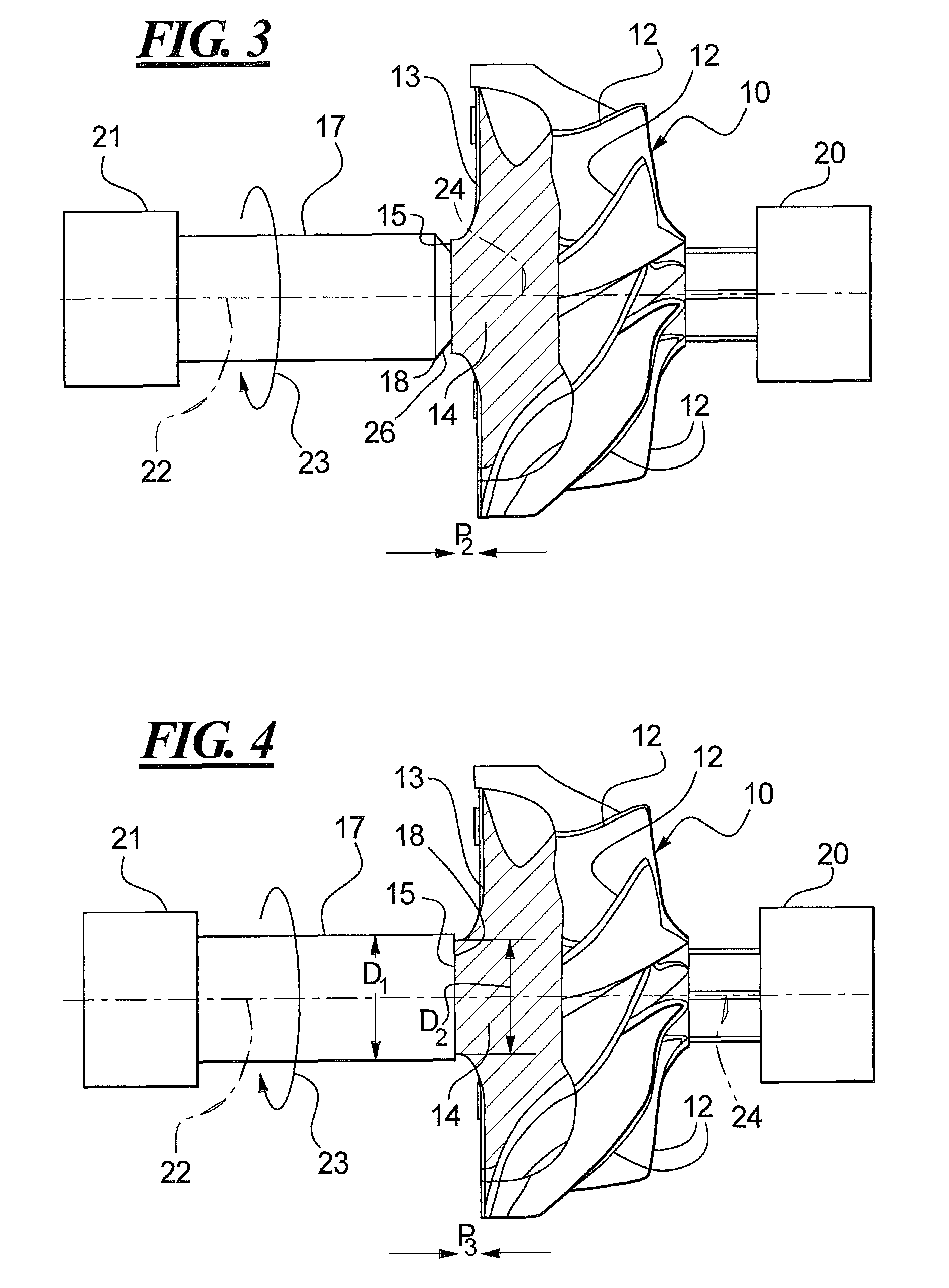Friction welding of titanium aluminide turbine to titanium alloy shaft
a technology of titanium alloy shaft and friction welding, which is applied in the direction of machines/engines, non-electric welding apparatus, waterborne vessels, etc., can solve the problems of turbine lag, titanium-aluminide use, and undesirable phase transformation at the material interface of the material interface,
- Summary
- Abstract
- Description
- Claims
- Application Information
AI Technical Summary
Benefits of technology
Problems solved by technology
Method used
Image
Examples
Embodiment Construction
[0016]Referring to FIG. 1, a turbocharger turbine 10 is shown inside a heating apparatus 11 which may be used to preheat the turbine 10 prior to conducting the remaining steps of the disclosed frictional welding process. The turbine 10 may include a plurality of vanes 12 connected to a turbine rotor wheel 13. The rotor wheel 13 may include a hub portion 14 that features an end surface or welding surface 15. The turbine 10 may also include a distal extension 16 which may be used to hold the turbine 10 in place in the stationary chuck 17 shown schematically in FIG. 2.
[0017]Returning to FIG. 1, the shaft 17 may include an end 18 that is connected to a further distal end 19 by a beveled portion 26. The smaller distal end 19 engages the turbine 10 first during the frictional welding process as illustrated in FIG. 2. Still referring to FIG. 1, the shaft 17 may be held in a rotating chuck 21 that can rotate the shaft 17 about its axis 22 as indicated by the arrow 23. The axis 22 of the sha...
PUM
| Property | Measurement | Unit |
|---|---|---|
| temperature | aaaaa | aaaaa |
| temperature | aaaaa | aaaaa |
| temperature | aaaaa | aaaaa |
Abstract
Description
Claims
Application Information
 Login to View More
Login to View More - R&D
- Intellectual Property
- Life Sciences
- Materials
- Tech Scout
- Unparalleled Data Quality
- Higher Quality Content
- 60% Fewer Hallucinations
Browse by: Latest US Patents, China's latest patents, Technical Efficacy Thesaurus, Application Domain, Technology Topic, Popular Technical Reports.
© 2025 PatSnap. All rights reserved.Legal|Privacy policy|Modern Slavery Act Transparency Statement|Sitemap|About US| Contact US: help@patsnap.com



